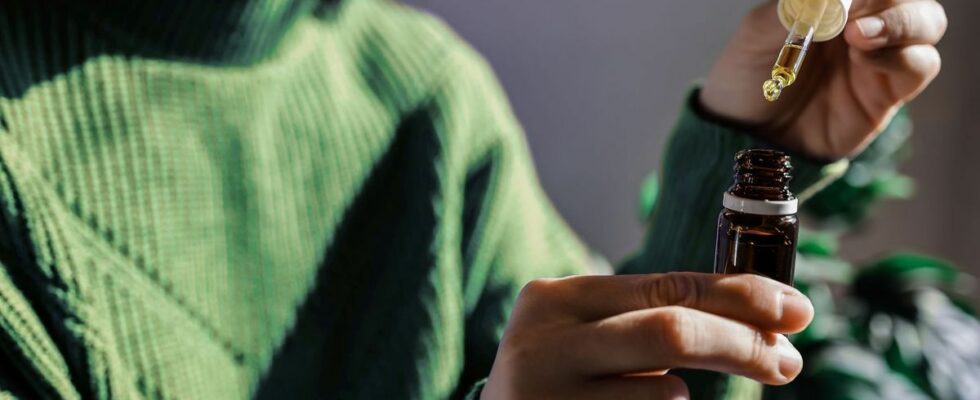Published on
Updated
Reading 3 min.
The National Medicines Safety Agency has just added certain cannabis derivatives to the list of narcotics. The reason ? The ANSM points to “risks” and a “possible dependence linked to their use”.
New substances derived from cannabis will be added to the list of narcotics as of June 3. According to a press release from the National Medicines Safety Agency (ANSM) dated this Friday, May 24, the substances listed, but also “their production, sale and use in particular will be prohibited in France“.
What are the substances concerned?
The list of substances concerned includes substances from the hemisynthetic cannabinoid family, but also chemically modified natural substances and synthetic cannabinoids.
- Hemisynthetic cannabinoids, i.e. chemically modified natural substances:
- H4-CBD and H2-CBD ;
- Certain cannabinoid derivatives formed from the nucleus called benzo[c]chromene as defined in the decision, excluding CBN (or cannabinol). This family includes in particular HHC (or hexahydrocannabinol), HHCO (or HHC-acetate or hexahydrocannabinol acetate), HHCP (or hexahydrocannabiphorol), HHCPO (or HHCP acetate or hexahydrocannabiphorol acetate), THCP (or tetrahydrocannabiphorol), THCA (or tetrahydrocannabinolic acid). Sold in particular on the Internet and in CBD stores, these substances come in the form of oil, resin, herb, spray, “gummies”, and e-liquids. They can be ingested, vaped or smoked.
- Synthetic cannabinoids, that is to say purely chemical substances: 5F-Cumyl-Pegaclone (or 5F-SGT-151), Cumyl-CH-Megaclone (or SGT-270), 7APAICA, 5F-7APAICA, Cumyl-P7AICA, 5F -Cumyl-P7AICA, BZO-Hexoxizid (or MDA-19) and BZO-Poxizid (or 5C-MDA-19). These substances are also sold on the Internet and in CBD stores, and can be in the form of resin, powder and e-liquid, to be ingested or smoked.
The ANSM puts forward “risks” and “possible dependence”
Why did the medicine policeman decide on these new restrictions? These are “reports of consumption” having led to “serious effects on the health of users” specifies the ANSM.
And their actionon the central nervous system, on aspects of perception, sensations, state of consciousness“motivated their classification.”These substances mimic the effects of THC, the main psychoactive component of cannabis, with serious and more intense effects than those experienced with cannabis consumption. still justifies the Agency.
What are the effects of these systems on health?
Among the symptoms described, we find:
- Vomitings ;
- A loss of consciousness;
- A coma;
- Convulsions;
- A paranoia;
- Anxiety;
- High blood pressure;
- Tachycardia;
- Chest pain that can develop into a heart attack;
- Renal failure.
“These effects are often more intense than those experienced when consuming cannabis and may require urgent attention from health professionals, particularly with synthetic cannabinoids. alerts the ANSM.
Since September 2023, “90 cases were reported to the drug dependence-addictovigilance evaluation and information centers (CEIP-A), 40% of which led to admission to the emergency room or hospitalization” specifies the authority, which also alerts on the composition, which “may not correspond to that indicated on the packaging of the product sold.
“Surveillance” carried out by the drug policeman
A year ago, hexahydrocannabinol (HHC) products were classified as narcotics. This is therefore not the first time that new cannabinoids have been banned by the ANSM, which ensures that it maintains “careful monitoring of the emergence of new cannabinoids on the market and their effects on health”.
CBD, on the other hand, is not concerned because it “does not present any risk of abuse or dependence”. In the event of poisoning, you must contact emergency services immediately, at the first symptoms. Addresses and useful information can be found on the site: www.drogues-info-service.fr.
